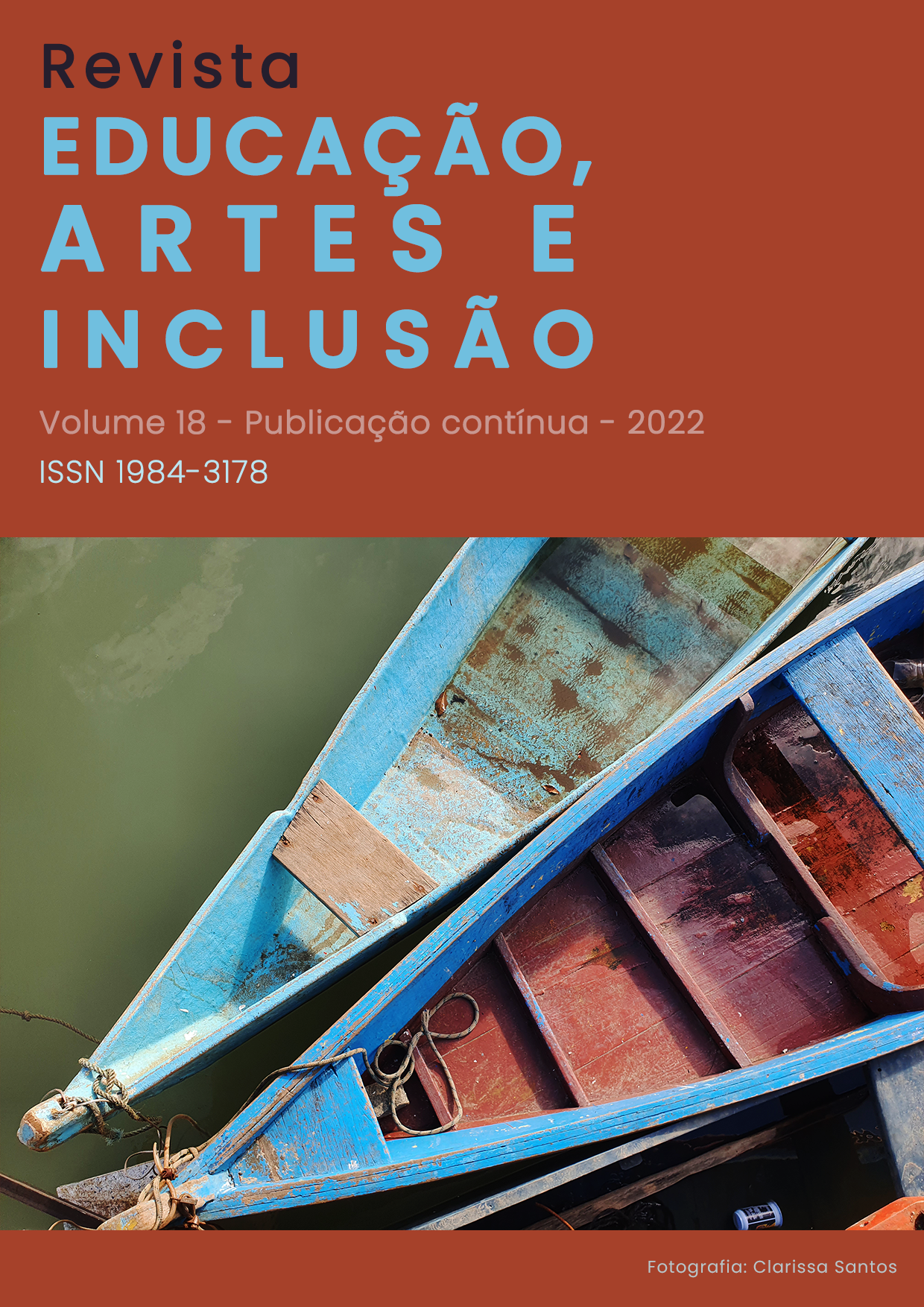Family and scoail influences on violin teaching to low-income teenagers Erechim/RS
DOI:
https://doi.org/10.5965/19843178182022e0028Keywords:
Family, Society, Musical educationAbstract
This article is about music education. The objective is to understand how the Family and society influence the choice and learning process of the violin for teenagers from the popular classes of Erechim/RS. Fruit of a qualitative, bibliographical and exploratory research, associated with field research, the study aims to identify social interactions and their influences on the study of the violin. The methodological path relies on bibliographical research related to music education and popular education, as well as semi-structured interviews, focused on the search for necessary subsidies to answer the article's problem to identify whether families and society are able to influence the choice and the study of the violin. The research subjects are violin students belonging to the popular classes and comprising the age group between 12 and 14 years old, together with their parentes and the conductor of the referred project. The data collected in this research were systematically analyzed in pre-defined categories. Through this research, we concluded that the Family and society beneficially influence the musical study of the interviewed adolescents.
Downloads
References
ALVARES, Thelma Sydenstricker; AMARANTE, Paulo (Org.). Educação Musical na Diversidade: construindo um olhar de reconhecimento humano e equidade social em Educação. Curitiba: CRV, 2016.
BARDIN, Laurence. Análise de Conteúdo. Lisboa: Edições 70, 1977.
FONTERRADA, Marisa Trench de Oliveira. De tramas e fios: um ensaio sobre música e educação. São Paulo: Ed. da UNESP, 2008.
FREIRE, Paulo. Pedagogia da autonomia: saberes necessários à prática educativa. Rio de Janeiro: Paz e Terra, 2016.
GADOTTI, Moacir. Educação integral no Brasil: inovações em processo. São Paulo: Instituto Paulo Freire, 2009.
GASKELL, George. Entrevistas individuais e grupais. In: BAUER, Martin; GASKELL, George. Pesquisa qualitativa com texto, imagem e som: um manual prático. 2. ed. Petrópolis. Vozes, 2002.
GIL, Antônio Carlos. Como elaborar projetos de pesquisa. São Paulo: Atlas, 2002.
ILARI, Beatriz. Música na infância e na adolescência: um livro para pais, professores e aficionados. Curitiba: Ibpex, 2009.
MINAYO, Maria Cecília de Souza (Org.). Pesquisa social: teoria, método e criatividade. Petrópolis, RJ: Vozes, 2004.
SANTOS FILHO, José dos; GAMBOA, Sílvio (Org.). Pesquisa educacional: qualidade – quantidade. São Paulo: Cortez, 2001.
SANTOS, Regina Marcia Simão (Org.). Música, cultura e educação: os múltiplos espaços de educação musical. Porto Alegre: Sulina, 2012.
WOJCIEKOWSKI, Gleison Juliano. Frederico Schubert e Orquestra de Concertos de Erechim: música de concerto em Erechim entre 1950 e 1968. Dissertação (Mestrado em Música) – Universidade do Estado de Santa Catarina, UDESC, Florianópolis, 2017.
YING, Liu Man. Diretrizes para o ensino coletivo de violino. São Paulo: Ed. da USP, 2012.
ZAGO, Nadir; CARVALHO, Marília Pinto de; VILELA, Rita Amélia Teixeira (Orgs.). Itinerários de pesquisa: perspectivas qualitativas em sociologia da educação. Rio de Janeiro: Lamparina, 2011.
Downloads
Published
How to Cite
Issue
Section
License
Copyright (c) 2022 Leandro Carlos Ody, Juliana Machado

This work is licensed under a Creative Commons Attribution-NonCommercial 4.0 International License.
Copyright Statement
The Educação, Artes e Inclusão is a journal that follows the Free Access Policy. The articles published by the journal are free of charge, intended for educational and non-commercial applications. The articles whose authors are identified represent the expression from the point of view of their authors and not the official position of the Educação, Artes e Inclusão Journal or the Educação, Artes e Inclusão Research Group.
Authors who publish in this journal agree to the following terms:
(A) Authors retain the copyright and grant the journal the right of first publication, with the work simultaneously licensed under the Creative Commons Attribution License which allows the sharing of the work with acknowledgment of authorship and initial publication in this magazine.
(B) Authors are authorized to take additional contracts separately, for non-exclusive distribution of the version of the work published in this journal (eg publish in institutional repository or as a book chapter), with acknowledgment of authorship and initial publication in this magazine.
(C) This journal provides public access to all of its content, as this allows for greater visibility and scope of published articles and reviews. For more information on this approach, visit the Public Knowledge Project.
This journal is licensed under a Creative Commons Attribution-NonCommercial-ShareAlike 4.0 International License. This license allows others to remix, adapt and create from your work for non-commercial purposes, and although new work must give you due credit and cannot be used for business purposes, users do not have to license such derivative works under the same terms.



